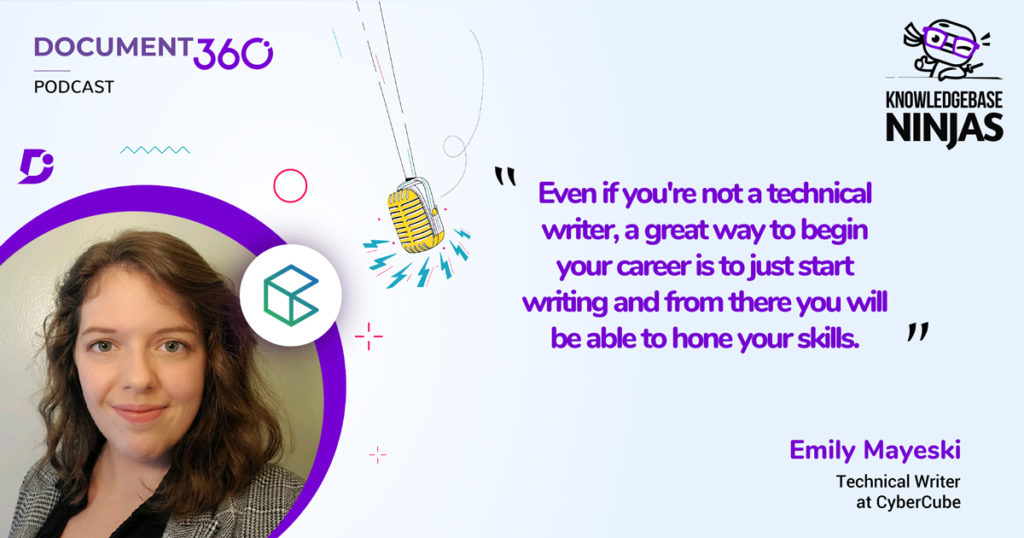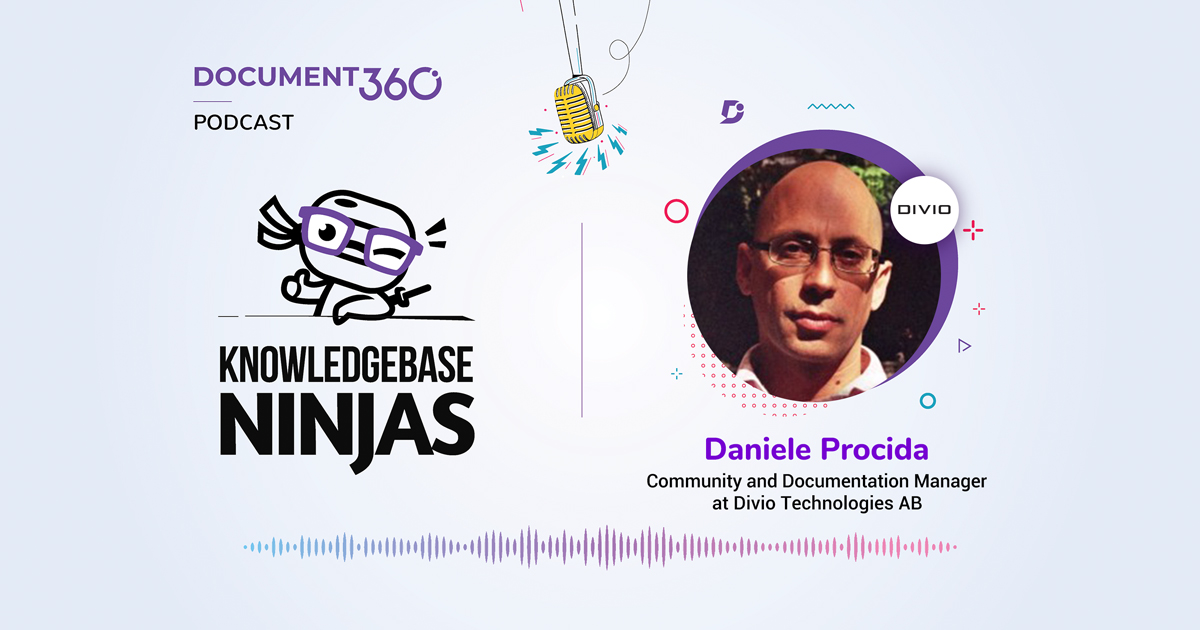Emily Mayeski, technical writer at CyberCube, joins us in this episode of Knowledgebase Ninja to share her experience of the importance of interactive technical content, her cross-collaboration documentation process, and technological advancements. Check out all the other episodes of Knowledgebase Ninja’s here.
Connect with Emily and CyberCube here:
Key Takeaways
Getting into technical writing
Having a love of reading, writing, and literature, Emily did her BA in English with particular emphasis on professional writing. She went on to do her master’s in literary and cultural studies.
Her first job was at a data and tech company as an instructional designer and technical writer, where she wrote manuals and interactive learning modules. She has been doing technical writing for about five years now. Currently, she is working at CyberCube.
A collaborative documentation process
As the company is relatively new, a lot of the processes for internal documentation are still under revision. According to Emily, the company values documentation and treats it as a very collaborative effort.
Since she has joined, Emily is going over the existing documentation to see what can be used as well as trying to implement new processes by involving more teams to come together and come up with a central place for documentation to occur.
For user-facing documentation, Emily shares the process in detail. Most of the requests come from users through the company’s client services team. Requests are made through a ticketing system, which helps the documentation team to sync up with other teams like the engineering team. After referencing other tickets and doing some research, the team comes to writing out the documentation. Then they go for previews with internal teams and then launch the documentation online.
For Emily, the essential part is the last step, which is building on the online docs through feedback from users, and generally adding new information when available. She says this is one of the advantages of having online documentation.
Is documentation now treated as a product?
Emily herself approaches it as a product to be offered, which means that it has to be high quality. It is written by people who use the product they write about, so it is effective and targeted. The use of other types of media like GIFs and videos to make documentation more accessible is also strongly encouraged.
At CyberCube, documentation can be considered as a part of the product. The company takes out time in the week to go over all the internal and external documentation to see how it can be improved and made more in line with user needs. They treat it as a part of the product being offered.
However, in general, Emily thinks there’s still some way to go in the industry to make documentation more interactive and user-based, instead of reference-based.
Essential factors to consider when creating documentation
Syncing up with the product development teams right from the start allows the documentation to be developed side by side with the product. Emily feels that working on the documentation while the product is undergoing development is a smart idea.
Timing is also an essential factor for Emily, who says that there should always be a fixed schedule for release notes. Keeping in mind the user’s needs, it’s also a good idea to involve different types of documentation beyond just written words, like videos and interactive learning.
A particular point Emily makes is to let users know within the documentation that it has been updated. This gives them the confidence that the company cares for their needs and that the documentation is updated and useful.
Can documentation lead to a difference in workload?
As the company is still newly launching it’s documentation, Emily says she can try to predict what will happen and assume that having documentation online for users will lead to a drop in requests to the client’s services team.
In terms of personal workload, Emily finds that having a dynamic system of documentation saves time from converting to PDFs for both the writers and the reviewers. She is a big fan of automation, which she says can reduce both human errors and the workload in the long run.
Who has inspired Emily in documentation?
Emily credits all her teammates at her previous workplaces at MSA, SocialCode, and Braze, as well as at her current workplace, for teaching her and being an inspiration in the field.
Emily’s favourite documentation related resources
She learnt a lot from the tutorials and articles on the following websites:
What documentation related advice would Emily give to her 20-year-old self?
Emily says she would tell her 20-year-old self to take some coding and UX design classes! She thinks having a base knowledge of these comes in handy for making content that goes beyond a plain PDF file.
Subscribe to Knowledgebase Ninjas
Quote:



 –
– 

